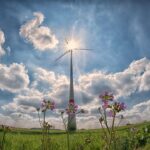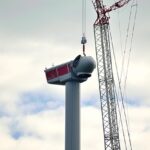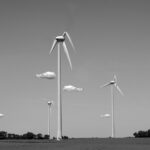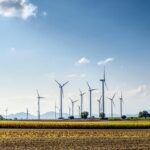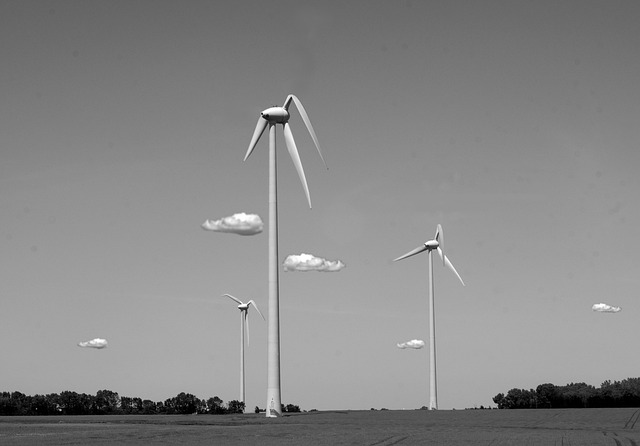Capturing the Wind: A Guide to Harnessing Renewable Energy
In a world increasingly concerned with climate change and sustainability, the transition to renewable energy sources has never been more vital. Among the various renewable energy options available, wind energy stands out as a particularly promising and abundant resource. This article delves into the significance of wind energy, its technology, benefits, challenges, and future potential, providing a comprehensive guide to harnessing this powerful natural force.
The Importance of Wind Energy
Wind energy is one of the fastest-growing sources of electricity in the world. According to the Global Wind Energy Council (GWEC), worldwide wind power capacity has increased dramatically over the past few decades, reaching over 743 GW by the end of 2020. This surge in wind energy usage highlights its importance in reducing greenhouse gas emissions and providing a sustainable alternative to fossil fuels.
Wind energy plays a critical role in achieving global climate targets and reducing dependency on non-renewable energy sources. By harnessing the natural power of the wind, we can create clean energy that not only meets our current energy demands but also paves the way for a sustainable future.
Understanding Wind Energy Technology
At its core, wind energy technology converts kinetic energy from wind into usable electricity. This process primarily takes place through wind turbines. A typical wind turbine consists of several key components:
- Rotor: The rotor comprises blades attached to a hub that captures wind energy. As the wind blows, the blades rotate, converting wind energy into mechanical energy.
- Gearbox: The gearbox increases the rotational speed from the rotor before it reaches the generator, which is essential for producing electricity.
- Generator: The generator converts mechanical energy from the turning rotor into electrical energy.
- Tower: The tower elevates the turbine to a height where wind speeds are generally higher, allowing for increased energy generation.
- Control Systems: Modern wind turbines are equipped with sophisticated control systems that optimize performance and ensure safety during operation.
Wind turbines come in various sizes, from small, residential turbines that can power a home to massive, utility-scale turbines that generate electricity for thousands of households. The choice of turbine size and location depends on various factors, including wind patterns, local regulations, and energy needs.
Types of Wind Energy Systems
Wind energy systems can be broadly categorized into two types: onshore and offshore.
Onshore Wind Energy
Onshore wind energy involves the installation of wind turbines on land. This type of wind farm is generally more cost-effective due to lower installation and maintenance costs. Onshore wind farms can be set up in various terrains, including rural areas, hills, and even former industrial sites.
Offshore Wind Energy
Offshore wind energy harnesses wind resources over bodies of water. Offshore wind farms benefit from stronger and more consistent winds compared to their onshore counterparts, leading to higher energy output. However, the construction and maintenance of offshore wind farms can be more complex and expensive due to the challenging marine environment.
Benefits of Wind Energy
Wind energy offers numerous advantages, making it an attractive choice for energy generation. Some of the primary benefits include:
- Environmental Impact: Wind energy generates electricity without emitting greenhouse gases or air pollutants, significantly reducing the carbon footprint associated with energy production.
- Renewable Resource: Wind is an inexhaustible resource, meaning it is available as long as the sun shines and the Earth rotates, making it a sustainable choice for energy generation.
- Job Creation: The wind energy sector has become a significant source of employment, providing jobs in manufacturing, installation, maintenance, and research.
- Energy Independence: By investing in wind energy, countries can reduce their dependency on foreign fossil fuels, enhancing national security and economic stability.
- Cost-Effectiveness: The cost of wind energy has declined dramatically in recent years, making it one of the most economically viable forms of electricity generation, especially in regions with high wind resources.
Challenges in Harnessing Wind Energy
Despite its numerous advantages, wind energy is not without challenges. Addressing these challenges is crucial for the continued growth of the wind energy sector:
- Intermittency: Wind energy generation can be unpredictable, as it relies on varying wind conditions. This intermittency necessitates backup power systems or energy storage to ensure a consistent energy supply.
- Land Use: Large-scale wind farms require significant land areas, which can impact local ecosystems and land use patterns. Careful planning and siting are essential to mitigate these effects.
- Wildlife Impact: Wind turbines can pose risks to birds and bats. Ongoing research and development of technology aimed at minimizing wildlife impacts are crucial to address this concern.
- Public Perception: Some communities are resistant to wind farm installations due to concerns about noise, aesthetics, and potential effects on property values. Engaging in open dialogue with local stakeholders is necessary to foster understanding and acceptance.
The Future of Wind Energy
The future of wind energy appears promising, with continued advancements in technology and favorable policy frameworks driving growth in this sector. Some emerging trends that could shape the future of wind energy include:
- Technological Innovations: Ongoing research is focused on improving turbine efficiency, increasing capacity, and developing advanced grid integration methods. Innovations such as floating wind turbines may also enable wind energy generation in untapped offshore locations.
- Hybrid Systems: Integrating wind energy with solar power and energy storage solutions can create hybrid systems that enhance reliability and minimize intermittency issues.
- Green Hydrogen Production: Wind energy may soon play a vital role in producing green hydrogen, a clean fuel that can be used in various sectors, including transportation and industrial processes.
- Policy Support: Governments are increasingly recognizing the importance of wind energy in achieving climate goals. Supportive policies, incentives, and renewable energy targets will be essential for fostering further growth in the sector.
Conclusion
Wind energy is a key component of the global transition to sustainable energy systems. With its numerous benefits and vast potential, harnessing the power of the wind offers an effective pathway to reduce our reliance on fossil fuels and combat climate change. By addressing the challenges associated with wind energy and embracing innovations and supportive policies, we can create a cleaner, greener future powered by wind. As we look ahead, the collective efforts of governments, businesses, and communities will be crucial in unlocking the full potential of this renewable resource, ensuring energy security and environmental sustainability for generations to come.
